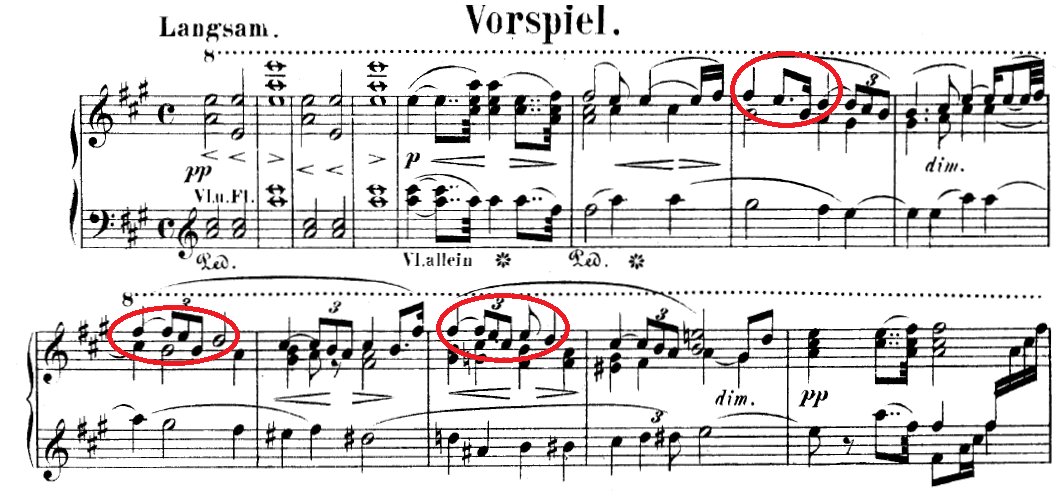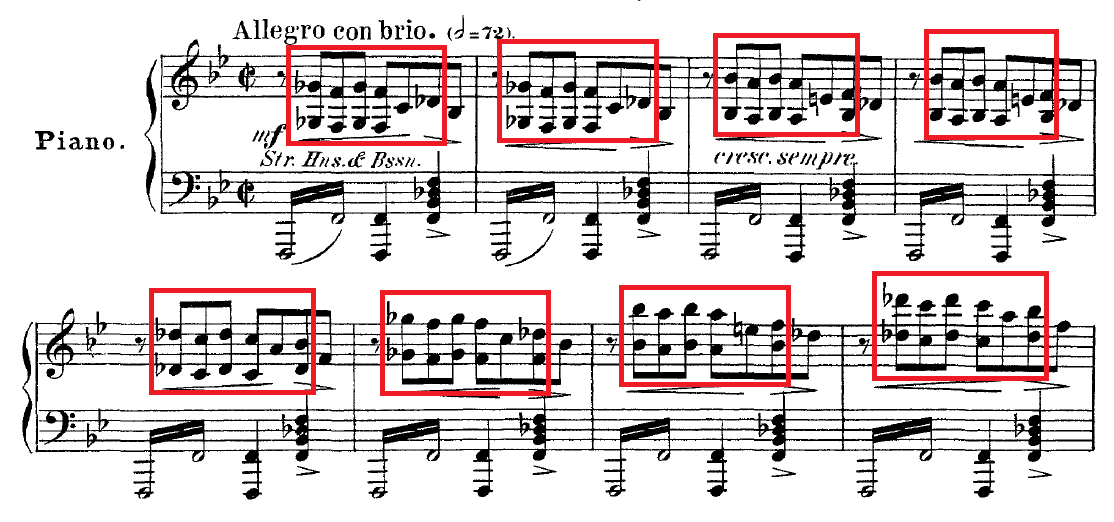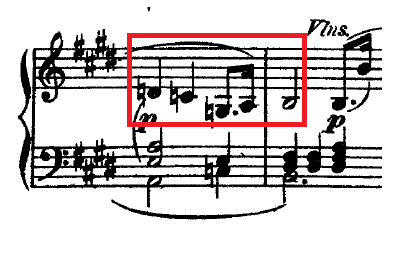
#WednesdayWagner Hoiho! Missing your weekly thread on Wagner's leitmotifs and composing strategies? Here I am! This week, we start talking on a leitmotif that appears in every Wagner's opera:
ONE LEITMOTIF TO RULE THEM ALL (part 1 out of 3)
#TwitterCultural
ONE LEITMOTIF TO RULE THEM ALL (part 1 out of 3)
#TwitterCultural
#WednesdayWagner Although each Wagner's creation has its own "sound world", and although leitmotif technique was not exactly exploited since the 1st one, there is a short gesture/motive that appears in ALL Wagner's operas. Don't you believe me? Keep reading ⬇️
#TwitterCultural
#TwitterCultural
#WednesdayWagner This is the recurrent leitmotif: the 4-pitch gesture that can be listened to right at the beginning of Lohengrin
#TwitterCultural
#TwitterCultural

#WednesdayWagner In this first thread, let's go through the first 3 Wagner operas ("Der fliegende Holländer", "Tannhäuser" and "Lohengrin") to identify this small but powerful melody
#TwitterCultural
#TwitterCultural
#WednesdayWagner Note that I would just mention the main appearances of this gesture or melodic idea, without digging bar by bar into the whole operas
#TwitterCultural
#TwitterCultural
#WednesdayWagner And indeed, in these three first operas, this melodic idea is not always treated as a whole leitmotif, but as a continuation of a melodic line, a cadencial gesture, a movement in the middle of a longer melody ...
#TwitterCultural
#TwitterCultural
#WednesdayWagner But before proceeding to it, we should mention that this motive was already present in a very well known piece at that time ... Yes, the birthday guy of today! Mendelssohn's "A Midsummer's Night Dream". Listen to 2.26 at the Overture:
#WednesdayWagner And of course, listen to the Wedding March at 0.09, just after the trumpet call:
#TwitterCultural
#TwitterCultural
#WednesdayWagner It seems clear that, despite Wagner's hard comments about Mendelssohn at that time, Wagner tried to absorb so much of Mendelssohn's style and mastery in composition. Indeed, Mendelssohn was one of the greatest master in counterpoints of all time
#TwitterCultural
#TwitterCultural
#WednesdayWagner So let's start with "Der fliegende Holländer". Just at the beginning of 1st scene we can hear clearly this idea in the strings. Listen to it here:
#TwitterCultural
#TwitterCultural
#WednesdayWagner And you can also see them in the score (piano reduction for the sake of clarity). Amazing!
#TwitterCultural
#TwitterCultural

#WednesdayWagner Let's continue with "Tannhäuser": Just within the Overture, we can listen to this melody at 1:35 in the following link:
#TwitterCultural
#TwitterCultural
#WednesdayWagner Here, the score of this moment, where you can clearly see the melodic line
#TwitterCultural
#TwitterCultural

#WednesdayWagner Although there are not many other appearances in "Tannhauser", listen to the solo violin at 8.54 in the prelude. This gesture is almost the same, but with wider intervals. The direction of the movement is the same
#TwitterCultural
#TwitterCultural
#WednesdayWagner Just as an anticipation of next thread, this idea would be re-used in ... "Die Walküre"!!! Yes, the first leitmotiv linked with Brünnhilde is almost this gesture, but based on an augmented 5th chord
#TwitterCultural
#TwitterCultural

#WednesdayWagner Let's finish today with "Lohengrin": We already mentioned the recurrence of this idea in the prelude, the first one appearing at 0.46 in this link, but the whole Prelude is almost based on this cell:
#TwitterCultural
#TwitterCultural
#WednesdayWagner Of course, the whole opera uses some ideas derived from this leitmotif. We can mention, as an example, the wonderful fanfare in Act. 3 to receive König Heinrich ... listen to 0.34 and following. The whole excerpt is incredible!
#WednesdayWagner For those score-freaks (like myself 😂), here you can see the beginning of this excerpt with the leitmotif marked in red
#TwitterCultural
#TwitterCultural

#WednesdayWagner ... And that's all for today! I hope you have enjoyed the long thread. Next week we will do the same with the whole RING CYCLE. Can you guess where this leitmotif appears in this majestic work? 🙂
#TwitterCultural
#TwitterCultural
@threadreaderapp unroll
• • •
Missing some Tweet in this thread? You can try to
force a refresh





